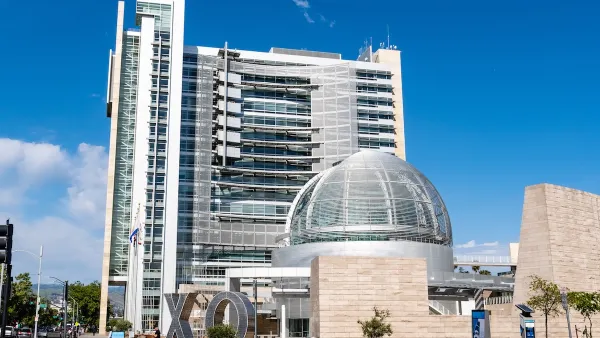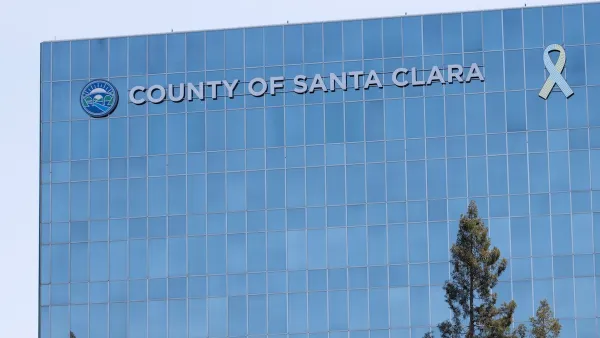For those seeking to diversify metropolitan mode shares, good news can be found in a report just published by the Brookings Institution: most urban jobs are near transit. Unfortunately, employees, for the most part, are not, reports Conor Dougherty.
For those seeking to reduce the amount of solo drivers comprising America's commuters (74%) in order to improve congestion, livability, and environmental impacts, a new Brookings Institution report that found more than 75% of all jobs in the nation's 100 largest metropolitan areas are located in neighborhoods with transit service will come as welcome news. Unfortunately, due to the suburbanization of jobs and homes, only about 27% of employees are able to get to their jobs in less than 90 minutes via mass transit.
Summarizing the report's findings, Dougherty writes: "On average, the nation's 100 largest metropolitan areas have 63% of
their jobs - 64.6 million total positions - located outside the central
city. And while most of those jobs are in near some sort of bus or rail
line, the patchwork of suburban transportation systems makes it hard for
their workers - most of which also live in the suburbs - to get there
without driving."
The report, which ranks the nation's metro areas by overall worker access to transit, found that "the metropolitan areas with the best labor access rate [Salt Lake City, San Jose, Honolulu, etc.]...are places with the best
suburban transportation networks."
So how can these barriers to employee transit access be overcome? The report advises that, "As metro leaders continue to grapple with limited financial resources,
it is critical for transit investment decisions to simultaneously
address suburban coverage gaps as well as disconnected neighborhoods."
FULL STORY: Most Urban Jobs Are Near Transit, but Most Workers Aren’t

Maui's Vacation Rental Debate Turns Ugly
Verbal attacks, misinformation campaigns and fistfights plague a high-stakes debate to convert thousands of vacation rentals into long-term housing.

Planetizen Federal Action Tracker
A weekly monitor of how Trump’s orders and actions are impacting planners and planning in America.

In Urban Planning, AI Prompting Could be the New Design Thinking
Creativity has long been key to great urban design. What if we see AI as our new creative partner?

King County Supportive Housing Program Offers Hope for Unhoused Residents
The county is taking a ‘Housing First’ approach that prioritizes getting people into housing, then offering wraparound supportive services.

Researchers Use AI to Get Clearer Picture of US Housing
Analysts are using artificial intelligence to supercharge their research by allowing them to comb through data faster. Though these AI tools can be error prone, they save time and housing researchers are optimistic about the future.

Making Shared Micromobility More Inclusive
Cities and shared mobility system operators can do more to include people with disabilities in planning and operations, per a new report.
Urban Design for Planners 1: Software Tools
This six-course series explores essential urban design concepts using open source software and equips planners with the tools they need to participate fully in the urban design process.
Planning for Universal Design
Learn the tools for implementing Universal Design in planning regulations.
planning NEXT
Appalachian Highlands Housing Partners
Mpact (founded as Rail~Volution)
City of Camden Redevelopment Agency
City of Astoria
City of Portland
City of Laramie





























